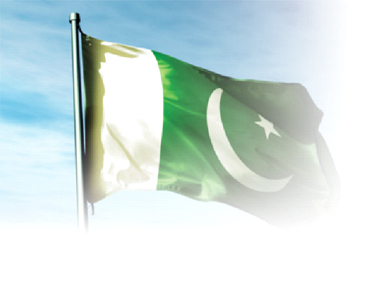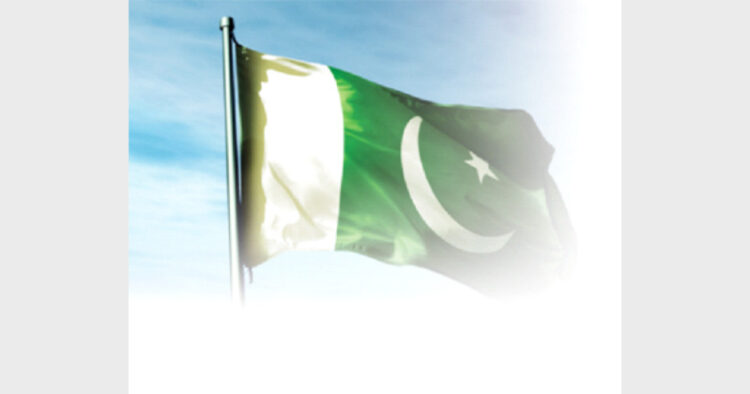
* Santosh Verma
On May 26, Pakistan’s Finance Minister Ishaq Dar presented the budget as a precursor to the financial year starting from July 1. The PML-N Government’s total budget outlay for 2017-18, possibly its last year in power, was Rs 4.757 trillion, out of which 19.36 per cent, $8.78 billion (Rs 920.2 billion) for the armed forces ( an increase of $578 million (or 7 per cent) to the budget for 2016-2017) has been kept aside under the Defence Affairs and Services head. The total outlay of 2016-17 fiscal year budget was Rs 4.4 trillion. It is said that the main focus of the budget is on energy, infrastructure, and human resource sectors of the country. The government has prioritised China-Pakistan Economic Corridor (CPEC) projects in the budget as well.
In defence budget of $8.78 billion (Rs 920.2 billion), for the operating expenses for the armed forces have been allocated Rs 225.5 billion, while almost Rs 322 billion will be allotted on salaries and remunerations. The armed forces will get Rs 244 billion for ‘physical assets’ and Rs 128.35 billion for ‘civil works’. The government will separately pay nearly Rs180bn in pensions to retired military officials and jawans. This does not count in the budget allocated to defence services. Finance Minister Ishaq Dar, who presented the budget in Parliament, also announced a 10 per cent increase in the pay of all armed forced personnel as a ‘special allowance’ in recognition for their sacrifices in the ongoing conflicts across the country.
A comparison of the increase in spending between the three services shows that the Pakistan Army will receive 47.5 per cent of the budget (i.e. $4.17 billion), while the Pakistan Air Force (PAF) and Pakistan Navy will be provided with 20.5 per cent ($1.8 billion) and 10.7 per cent ($939.46 million), respectively. The remaining amount, 20.3 per cent ($1.87 billion) will be allotted for defence production, which involves the procurement of arms, such as the JF-17 multi-role fighter, al-Khalid main battle tank (MBT) and others.
Dissecting the allocation for defence services reveals that the major thrust has been on capping the operating expenditures of defence services. The ‘operating expenditures’ head, which covers things like transportation, fuel costs (POL), ration, medical treatment, training and other common use items, would grow by a meagre 1.8 per cent to Rs 225 billion from Rs 221 billion in 2016-17. The other heads of defence budget namely employees-related expenditures, physical assets and civil works are all set to increase by around 12 per cent. Increase in defence spending during the next fiscal year would be in a single digit, the lowest in decades — 9.4 per cent to be precise — when compared to the expenditure incurred during the outgoing financial year. But in terms of percentage of GDP it would be going up from 2.6 to 2.9 per cent. Furthermore, the defence allocation does not give a complete picture about how much the Pakistan Government is actually spending on its armed forces. The allocation does not include Rs 180 billion pension bill of retired soldiers and an unknown amount spent on the nuclear programme and development of missiles. Another Rs 90 billion-Rs 100 billion per annum has over the years been spent on security operations under a separate allocation. It is proposed that the amount to be earmarked for security and related aspects be made 3 per cent of the Gross Divisible Pool, but the matter is still being debated at the Council of Common Interests. Major acquisitions are also not included in defence budget.
Budget and Pakistan’s
Proposed Defence Acquisition
IHS Jane’s projection stated that Pakistan may spend $12 billion in procurement from 2016 to 2024 – i.e. $1.5 billion per year. Pakistan”s current budget is in line with these plans. Besides regular force increases this part of the budget may include payments for acquisitions with heavy expenditure, such as the eight Hangor-class submarines, four MILGEM Ada corvettes (which will be inked in June), three new Saab 2000-based Erieye airborne early warning and control aircraft, the STM-led Agosta 90B
submarine upgrade program and armour upgrade programme with Ukraine.
There are also some additional defence programmes on Pakistan’s roadmap. The PAF is expected to issue its first JF-17 Block-III orders in 2017. In 2016, Pakistan had begun assessing new hardware, such as 155mm/52-calibre wheeled self-propelled howitzers, attack helicopters and assault rifles. Pakistan is also aiming to develop a new miniature submarine and new munitions.
But Pakistan’s defence acquisition programme can get bigger jolt by potential US move. According to some international media reports, after neglecting Pakistan’s efforts against terrorism in Arab-American Islamic Summit, US President Donald Trump is considering to convert military aid to Pakistan into a loan. Making efforts to decrease spending on diplomacy aid by 29 per cent, the Trump administration has proposed the plan in its annual budget to the Congress. Countries are given loans or grants to by US military equipment under foreign military financing.
The slash in military aid under the State Department is in part meant to fund an increase in military spending. Thus, due to the lack of flow of money and resources from the US, it is natural to have a negative impact on Pakistan’s defence acquisition program.
Before the election 2013, PML-N had made strong commitment to overcoming the energy crisis, developing infrastructure, boosting the economy, improving agriculture, bringing reforms in education and health sectors, creating job opportunities, ensuring prompt justice and peace, increasing exports, introducing good governance and creating provincial harmony. But it failed to meet the target in many areas although headway was made in all. In the wake of the 18th Amendment of the Constitution and end to the Concurrent List, the vital sectors like education and health and production of electricity to limited quantum along with maintenance of law and order were handed over to the provinces. As such the fulfillment of the PML-N promises had to come also through the provinces of which this party ruled the largest one, Punjab, which received the largest chunk of resources from the divisible pool. And now when elections are going to be held in Pakistan and in such a situation, while economic measures are not working to woo people in Pakistan
In these circumstances, the political parties can fabricate a nefarious alliance with notorious leadership of Pakistan’s armed forces for promoting anti-India activities, in an effort to gain popularity and divert the attention from real problems, which can threaten the peace of the region.
(The writer is Bhopal based Pakistan observer)














Comments